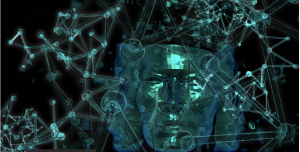The article Indigenous Knowledge and Technology at MIT: “Is it Wise?” discusses various diverse domains such as the decolonization of space, re-imagining Indigenous architecture, and the role of community-based governance in the genetic modification of invasive species. One of the research projects called protocol-based Artificial Intelligence caught my attention. They briefly discuss how “Aspects of the Anishinaabe worldview, knowledge generation, and dissemination protocol to ask if ‘values might be articulated in a manner that retains their cultural integrity’ rather than having algorithms rely on translation from a high-resourced language.”
The concept of artificial intelligence and its use in preserving Indigenous languages has been used in New Zealand. The app Korero Maori was used to collect oral recordings in Indigenous languages. Part of the project’s achievements is restoring the native sound of the language and avoiding the assimilation of English as far as possible.
The article, How AI is helping revitalise indigenous languages discusses data sovereignty; two key phrases that stuck out to me include: “‘We know what it means losing sovereignty,’ . . . ‘Data is the new land. Having our land taken off us, and the experience of language loss in our family, we take data sovereignty very seriously.” Secondly, “If we want to use AI for good, rather than big tech gobbling up our data and selling it back to us, we should empower communities to lead their own platforms and solutions to help move their people forward.”
I think we are just getting started with how AI can be used to help preserve Indigenous languages, protocols need to be followed, and more work needs to be done moving forward.

